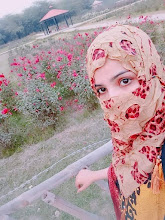What the western culture dresses take from Indian Fashion
Indian fashion began gaining popularity in western culture in the 1960s and 1970s, just when western culture started gaining popularity in India. The western culture dresses have incorporated the classical Indian techniques, textiles, printing, sequence of tinsels, the craft of coloring, knitting, and embroidery to display the infusion of the western and eastern cultures. Indian fashion and culture have come to the attention of fashion designers from around the globe. They have utilized Indian textiles and prints over the years and emulated some of the traditional Indian silhouettes in a modern yet exciting way. Let's take a look at some western fashion inspired by fashion in India.
Fashion of western culture and Indian fashion influence
Elie Saab, Spring Collection 2016
In true Elie Saab nature, the Spring collection of 2016 conserves the elegance and delicacy of his past designs, however, it is further inspired by the influence of colonial India and traditional Kashmiri art. Although the color palette was in a neutral color, the regality is enhanced due to hefty Indian style work and embroidery, and familiar drawing of fabrics over the shoulder mimicking dupattas and sarees. The signature Elie Saab collection of elegance is only intensified by fitted colonial caped gowns and neck patterns in a fusion of Indian style and Edwardian.
Marchesa S/S 2013
Marchesa on regular basis pays tribute to Indian textiles and fabrics in their fusion of Indian and western culture dress and designs while being careful not to copy the culturally significant silhouettes. Instead, they put together south Asian styles, patterns, and prints like China silk, and brocade, in vibrant colors like red, blue, pink on western silhouettes. The fusion of western and traditional fashion and cultural features indicating origin creates a completely new aesthetic.
Ryoko Haraguchi’s ‘Haath Heart’
Ryoka Haraguchi's love for Indian textiles inspired her Haath Heart collection at Artisans Mumbai in the year 2016. The collection was designed with the combination of Japanese Dyeing techniques and Indian weaving techniques to form a unique outfit that despite Japan's and India's seemingly clashing approaches to apparel, results in a look that is elegant and full of fashion and culture. She modernizes the ancient arts of traditional Indian weaving, dyeing techniques, and stitch work using Indian silk and Kora Sarees as the material did the traditional Japanese board dyeing technique, and persimmon dyeing Kakishibu.
Burberry
The iconic trench coat designed by Burberry was recreated with Maheshwari silk which is commonly used in Indian sarees, which replaced the boring and conventional beige for Vogue India's fiftieth anniversary.
I Knock Fashion Desk
The fashion industry is all about experimenting and making new fashion statements. Over the past few years, the appropriation of Indian culture and tradition has become immensely popular in the western fashion industry and throughout the world. Indian fashion and culture are praised for their colorful, intricate, and bold style with their stunning embroidery and textile. It is quite evident that Indian influence on the western fashion industry is unparalleled. Keep checking our blogs to stay updated with the latest fashion news and trends.
from Everyone's Blog Posts - Fashion Industry Network https://ift.tt/3eGwmwe



No comments: